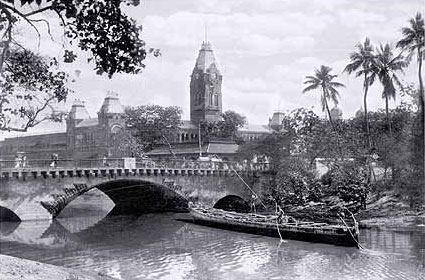 When British merchants made their way to the south of India in the early 17th century, they needed land they could claim for the East India Company. Merchants Francis Day and Andrew Cogan, along with their local agent Beri Thimmappa, negotiated with a member of the Nayak clan, which then ruled those parts of the country.
When British merchants made their way to the south of India in the early 17th century, they needed land they could claim for the East India Company. Merchants Francis Day and Andrew Cogan, along with their local agent Beri Thimmappa, negotiated with a member of the Nayak clan, which then ruled those parts of the country.
The land they acquired came to be known as Madras, before being renamed Chennai in 1996. The city was renamed by the government of Tamil Nadu state as a tribute to the original name of that region, Chennapatnam, which some sources say was derived from the name of a prominent chieftain of those times, Chennappa Nayak.
Since 2004, Chennai’s heritage buffs have been marking that real estate deal – which historians believed took place on Aug. 22, 1639 – as Madras Day, centering walks, exhibits and other events around it.
The choice of the date to celebrate the city — and the name of the event – to some extent pays homage to the Raj era, since a collection of villages and other settlements existed for many centuries in the area before Day and Cogan set up their trading post. The city’s two big temples, Kapaleeshwara, in the Mylapore area, and Parthasarathy, in Triplicane, are believed to date back to the 7th century. But it was largely under the British that Chennai grew into a large port city, since its strategic location along the Coramandel Coast matched their trading needs.
One of the first things the East India Company did was to build Fort St. George. Madras grew rapidly around the fort, as trade and commerce flourished. Even today, the Fort area remains the heart of the city – now serving as the administrative headquarters of the Legislative Assembly – although Chennai has expanded in all directions.
The idea for Madras Day was the brainchild of city historian S. Muthiah, who got together with prominent publisher Vincent D’Souza and journalist Sashi Nair to get the heritage week off the ground, independent of the government.
The events aren’t focused only on the colonial period, though. In the days leading up to August 22, there have been walks focused on the studios of Kollywood, as the local film industry is known, and on the city’s engineering tradition. Upcoming talks include one on the city’s Anglo-Indians, while walks focus on different parts of the city, such as the “Magnates of Mount Road,” the street where the venerable Chennai-based Hindu newspaper is located.
Many folk traditions also form part of these events, particularly the contests: There is one for alpana – floor decorations with rice flour, or kolam, in Tamil, and another for recipes of home remedies. Many of the events are geared towards children, so they imbibe love and respect for their city, as it was and as it is now. Among them, an early evening session of storytelling by the sea.
Like the founders of Madras Day, many locals still think of and refer to their city as Madras. However, there is a buzz in the air in Chennai that was perhaps missing when the city was known as Madras, partly aided by the influx of people from other states who have moved there for work in the information technology and automobile industries. Over the years, the city has shaken off its image as a slow, quiet and provincial town and turned into a fast, vibrant and modern metropolis – that still holds on to its roots.
Present-day Chennai straddles the old and the new with products like a sari that has a pocket for mobile phones, introduced by a popular store. Now upmarket restaurants serving Greek and Thai cuisine coexist with local spots serving the ever popular idli-sambhar and filter coffee. The new entrant to the newspaper market, The Times of India, is as popular as the venerable Hindu among Chennaites and the conservative city recently played host to a gay pride march.
Find more information and an events calendar on the Madras Day website.
***
This was published on the Wall Street Journal blog on Madras Day…
